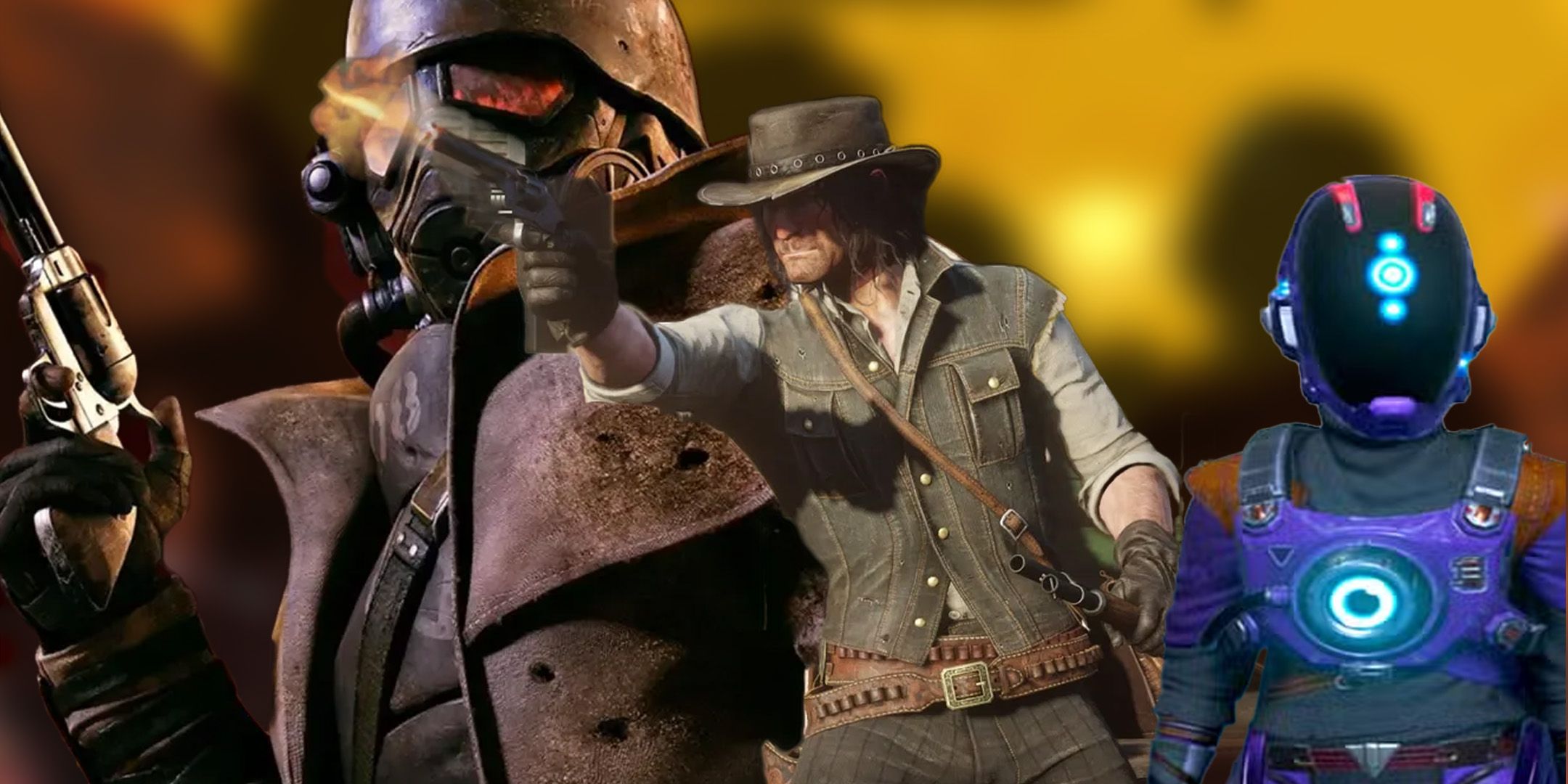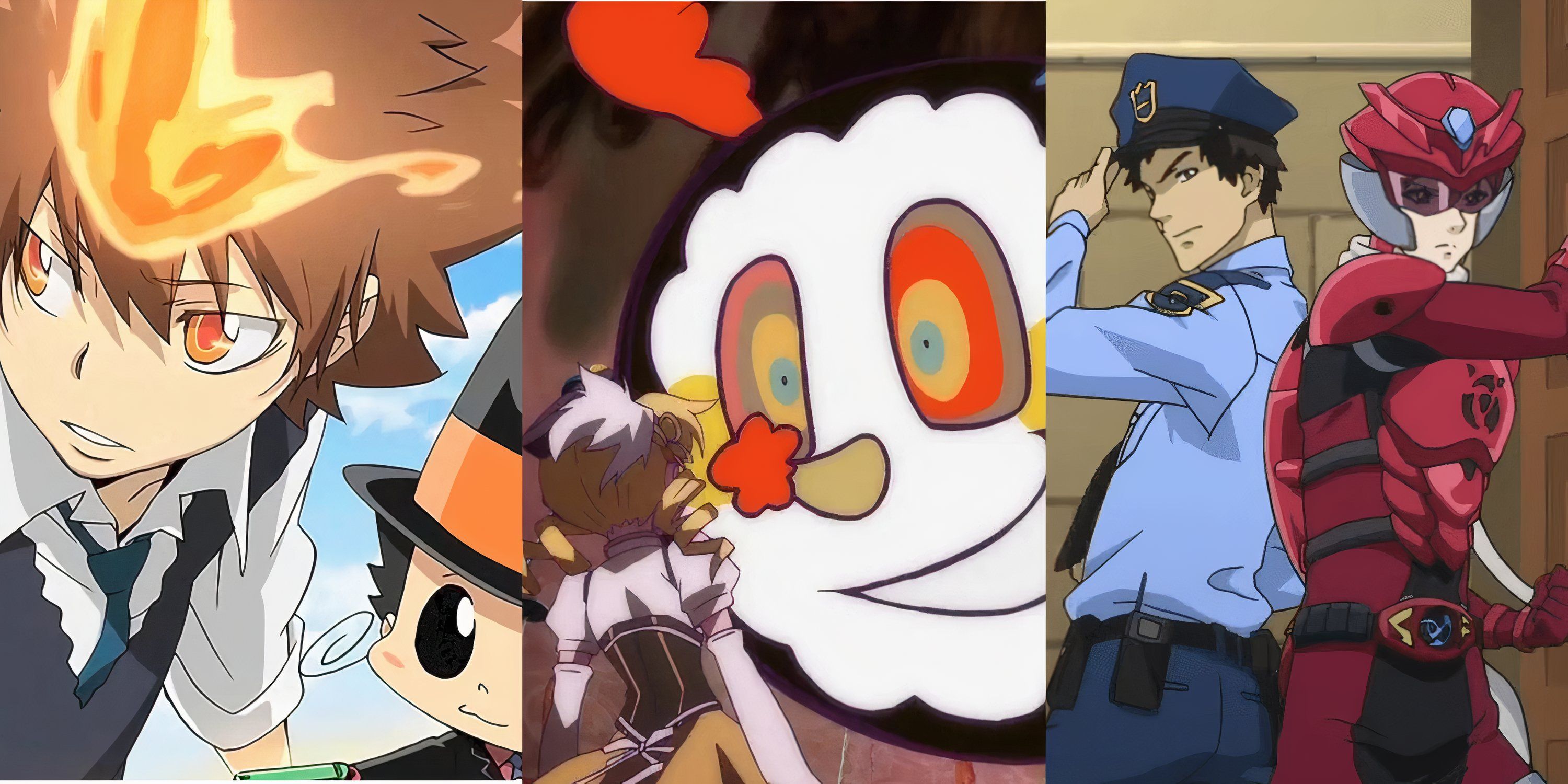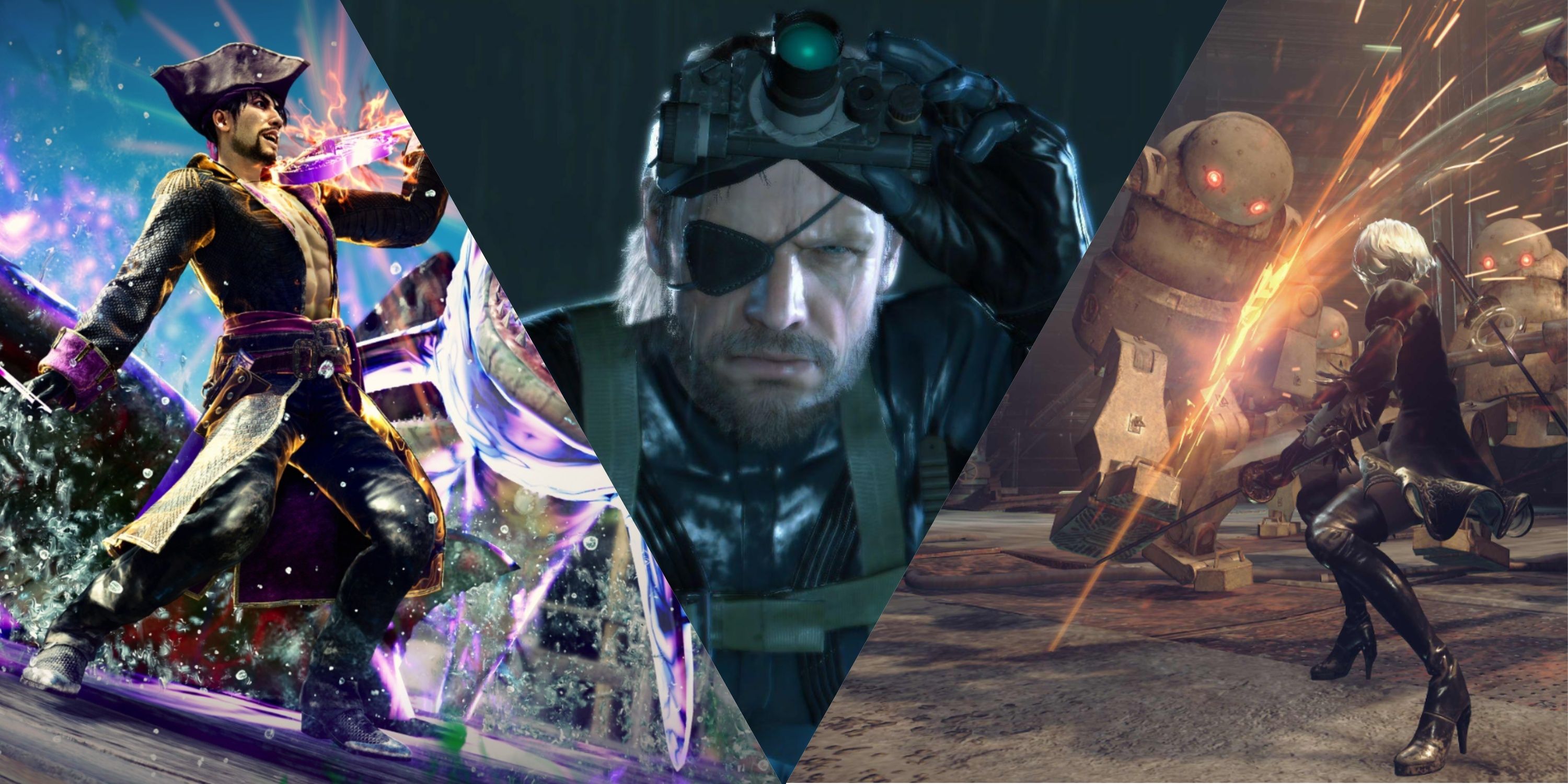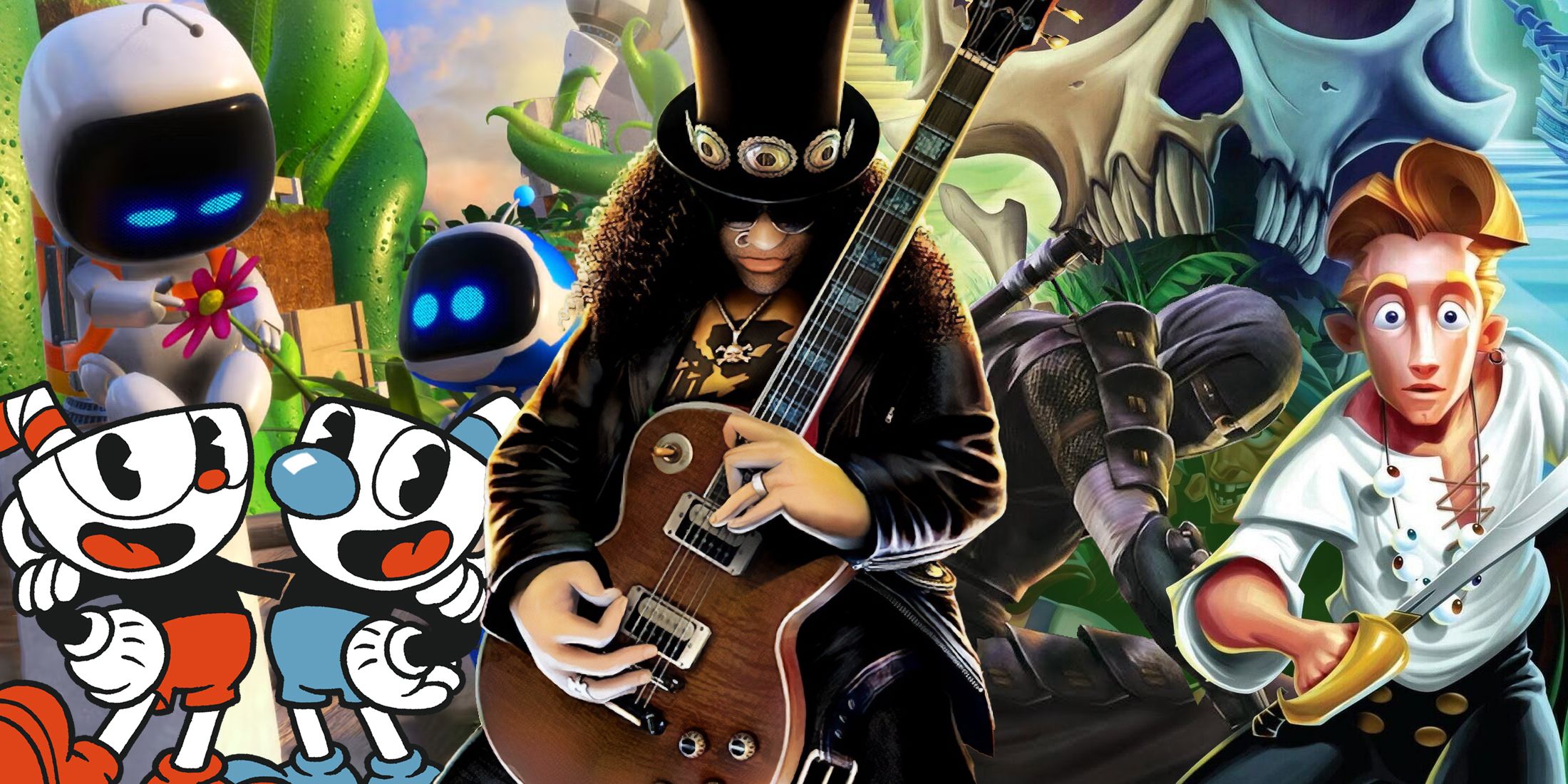Summary
- Devil May Cry 3 revived the hack and slash genre with expanded combat and a charismatic protagonist.
- Street Fighter 4 saved the competitive edge of fighting games, bringing them back into the mainstream.
- Fire Emblem: Awakening breathed new life into tactical RPGs, making them both accessible and engaging.
Considering how immensely competitive the video game industry can be, it’s inevitable that a few genres will end up being overshadowed over time, with some of them even dying out entirely. On the one hand, there have been a handful of genres that have managed to maintain a steady popularity ever since they were first introduced to players, but some of the more niche game categories have often struggled to carry this level of momentum.
4:47

Related
8 Best Open-World Games That Mix Multiple Genres, Ranked
Blending genres in open-world games can result in a masterpiece; other times, mishmash that will leave the player scratching their head.
Thankfully, though, there are several well-known games that single-handedly managed to revive a specific genre at a time when it looked like they were on the verge of extinction, raising them back up to their former glory for an entirely new generation of players to enjoy. Of course, for a game to achieve such an impressive feat, it needs to prove why the genre in question is worth keeping around, so the games themselves need to be high quality, as is the case with these excellent titles below, which are all credited for saving their respective genres.
6
Devil May Cry 3
The Third DMC Game Injected a Burst of Stylish Energy into the Hack and Slash Genre
While some will credit games like Dungeons and Dragons and the classic Diablo games with introducing elements of the hack and slash genre to the world, it was really Capcom’s Devil May Cry that turned the genre into something that could be defined. While the first game in this immensely popular franchise was well received, Devil May Cry 2 felt like a huge step down from what had come before, especially due to the difficulty being so easy that even a toddler could complete the game if they tried hard enough.
It’s important to remember that this was a time before developers like Platinum Games were churning out character action games every few years, so if Devil May Cry took yet another misstep, it seemed likely the genre as a whole would have collapsed along with it. Thankfully, this didn’t end up being the case as Devil May Cry 3 improves on everything that made the original game so special. Not only is Dante a lot wittier and and charismatic this time around, but the combat itself was greatly expanded thanks to the Styles system, allowing players to choose a specific playstyle that they can then upgrade and enhance over the course of the story in order to dish out as much damage as possible.
5
Street Fighter 4
Street Fighter 4 Proved Fighting Games Could Exist on Modern Consoles
After fighting games took the arcade scene by storm in the 80s and 90s, the bubble seemed like it was inevitably about to burst once modern home consoles began flooding the market. While games like Tekken and Soulcalibur would continue to draw in players, the competitive edge that had always been synonymous with the genre felt like it had been lost — that is, until Street Fighter 4 came along. With a bold new aesthetic and a focus on making the game as balanced as possible, Street Fighter 4 is credited by many fighting game fans as bringing the genre back into the mainstream.

Related
8 Anime That Switch Genres Midway
These colorful anime present as one genre at the start, but at some point in their run, they switch genres into something else entirely.
More importantly, though, it proved that fighting games didn’t only belong in the arcades, showcasing that they could be just as fun, popular, and competitive on modern systems. Many people refer to the years before Street Fighter 4 came out as the dark age of fighting games, but considering they are now enjoying something of a Renaissance period, the game definitely deserves a lot of credit for how it saved the genre.
4
Fire Emblem: Awakening
Intelligent Systems’ Final Ditch Effort Brought Tactical RPGs Back into the Spotlight
Back when JRPGs were first becoming mainstream, many developers began tinkering around with the classic turn-based battle system in order to create something a little different for fans to enjoy. The idea of a tactical RPG game where players could take more of a strategic approach to the gameplay was popularized with games like Final Fantasy Tactics, but just like the turn-based combat system it was inspired by, these games began to lose their luster throughout the 2000s.
With fast-paced action games and chaotic FPS titles becoming the norm, franchises like Fire Emblem were struggling to grab people’s attention. It got to the point where developers at Intelligent Systems were even told by Nintendo that they would have one last chance to make a commercially successful game before Fire Emblem was shut down for good. Thankfully, Fire Emblem: Awakening not only saved the series, but it gave the tactical RPG genre a second wind. A major way it achieved this was by making the game as accessible as possible, such as by allowing players to turn off permadeath to make the gameplay less stressful, alongside being able to team up certain units to help deal extra damage in combat.
3
The Walking Dead
A Modernized Point-and-Click Adventure That Felt Fresh and Exciting
There was once a time when the point-and-click gameplay formula was the standard for adventure games, with the Secret of Monkey Island being a very popular example. Once developers had figured out how to give players direct control of their character thanks to the use of different camera angles and control schemes, the point-and-click style of gameplay began to feel a little archaic, but the game that helped to emphasize its place within the modern industry was Telltale’s The Walking Dead.

Related
8 Best Open-World Games That Change Genres Mid-Game
These games keep players engaged by subverting genre expectations throughout.
While players are able to move the protagonist Lee by clicking on certain items around the environment, they also need to make important split-second decisions anytime the zombies begin to attack. This adds a sense of tension to the moment-to-moment gameplay that allows this traditional formula to feel much more exciting and engaging, with the game becoming so popular that it would spawn a plethora of similar point-and-click adventure games, many made by Telltale, but some by other developers entirely.
2
Minecraft
Bringing Survival to a Whole New Audience of Players
Before Minecraft was officially made public in 2011, the survival genre as we know it today was still considered fairly niche. Though there were games like UnReal World and Wurm Online that helped to establish what the genre even was, they ultimately lacked the interest or accessibility to reach the mainstream, and considering other genres were already beginning to dominate the market, it was a real struggle for survival developers to find their place within the industry.
Minecraft, however, completely turned this around. The bright and vibrant visual style and limitless amount of creative freedom had already made the game appealing to gamers of all ages, but what also made it so much fun was the survival mechanics, specifically the need to fend off monsters while also eating enough food to keep the hunger bar full at all times. Minecraft continues to be one of the most popular games on the planet to this very day, and it did an amazing job at demonstrating how enjoyable survival games can truly be when the developers take the time to make them easy to jump into for both new and veteran players — and even people who don’t typically play games at all.
1
Resident Evil 4
Survival Horror Came Back Like a Corpse Rising from the Grave
It may be hard to believe these days, but survival horror seemed to many like it was on its last legs in the early 2000s. While the first three Resident Evil games were smash hits, because of the plethora of Resident Evil clones saturating the market, alongside Capcom stubbornly refusing to move away from the fixed camera angles, many people began moving over to other genres that seemed more modern and experimental.
In a desperate attempt to change up the formula, Capcom came out with Resident Evil 4 — a game that completely defied the rules to launch survival horror into a brand-new era. The biggest change was obviously the switch to a third person camera angle, making players feel much more immersed in the action as they carefully plan each of their shots when taking on a swarm of enemies. The decision to switch out slow-moving zombies for faster, more aggressive Ganado also helped to make the game feel a lot more exciting to play. Considering the staggering number of survival horror games that play so similarly to Resident Evil 4 nowadays, it deserves all the praise it has received for raising survival horror back from the dead.

More
6 Best Video Game Genres AAA Studios Don’t Make Like They Used To
From Guitar Hero’s plastic instruments to Metal Slug’s run-and-gun chaos, these mostly-abandoned video game genres once ruled arcades and consoles.
#Games #Revived #Genre

